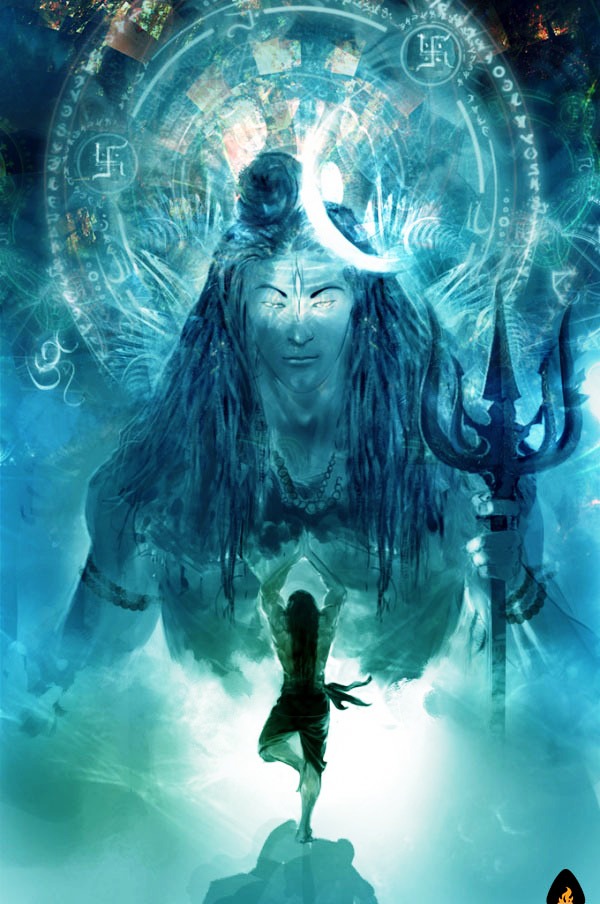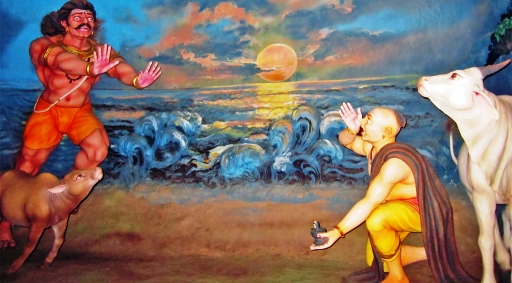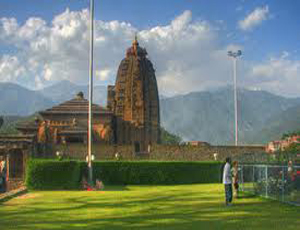
Ravana is the most popular villain and Ramayana, the most believed in legend in India. In fact, for most people, Ramayana was real and so were all the characters including Lord Rama, Goddess Sita, Lord Hanuman and others. Regardless of whether it’s a mythical story or a narrative based on the happenings that actually took place, Ramayana does indeed convey the deepest spiritual, religious and social messages very well.
While all of India gets busy in the festivities of Dussehra, Baijnath in Himachal won’t be celebrating this holy Hindu festival. This is not something that unique happening this year as Baijnath never celebrates Dussehra.
Why this is so is related to the history and the legend behind the formation of this holy town.

It is said that Ravana, the demon king of Lanka, prayed for a long time to Lord Shiva in order to get the gift of invincibility and immortality. He even beheaded his ten heads at Lord Shiva’s altar. Pleased by this self sacrificing act and his sincere and deep meditation, Lord Shiva granted him his wishes and restored his heads.
But Ravana wanted more and asked Lord Shiva to come with him and settle in Lanka. Surprisingly, Lord Shiva agreed and turned into a Lingum so that Ravana could carry him back to his home land. The only condition was that he could not set the Lingum down anywhere on the way as if he did, that would be the place where Lord Shiva would reside from then on.

Ravana carried the mighty Lingum but when he reached the area where Baijnath today stands, he had to answer the nature’s call. He handed over the Lingum to a shepherd who was in the locality and told him not to set it down. But while he was gone, the shepherd found the Lingum to be extremely heavy and after a while got tired and had to set it down.
 In this way, the town of Baijnath became the abode of Lord Shiva. In the 13th century the Baijnath temple was built around the ancient Lingum and today it is one of the most important places of pilgrimage for Hindus. The town located midway between Mandi and Palampur and just 60 km from Kangra is visited by thousands of pilgrims every year.
In this way, the town of Baijnath became the abode of Lord Shiva. In the 13th century the Baijnath temple was built around the ancient Lingum and today it is one of the most important places of pilgrimage for Hindus. The town located midway between Mandi and Palampur and just 60 km from Kangra is visited by thousands of pilgrims every year.
The people of Baijnath traditionally don’t celebrate Dussehra or burn the effigy of Ravana because of their reverence to Lord Shiva. No matter what Ravana did in his life, he was first and foremost one of the greatest devotees of Lord Shiva. And in a way Baijnath wouldn’t have been the auspicious town it is today if not for Ravana. So maybe, not burning Ravana’s effigy is a way to thank him.
Despite the legend, it sounds unbelievable that one of the greatest Hindu festivals, which celebrates Lord Rama’s victory over Ravana, is not celebrated in a Himachal town. In the past people have tried to celebrate the festival and decided to burn the effigy of Ravana. It is said that whoever tried this, brought upon himself the wrath of Lord Shiva and faced disastrous consequences.
The fear of upsetting the Lord of destruction is so high in Baijnath that there are no goldsmiths in the town. The logic being that Ravana lived in Lanka, the country of gold, and wanted to take Lord Shiva with him and even though Lord Shiva considered gold as good as any other stone and wished to live where the nature was at its best, he accepted to go. This disagreement between the Lord and his devotee is enough to keep the people from ever trying to open a goldsmith’s shop.
These legends and stories are deeply rooted in Himachal’s culture and make us who we are. So it doesn’t matter if the legends are true or not, the people of Baijnath will not burn the effigy of Ravana and refrain from celebrating Dussehra.

As far as I know and understand, the story of ten heads is not related to beheading but to Raavan’s vast knowledge of Vedas and Puranas. Six Puranas and Four Vedas = 10 Heads.
[…] Heritage, Himalayas, Kangra, Mandi/Temples in Himachal Pradesh That Are Over 500 Years Old Previous […]